 |
by Lawrence Bonk on (#71MSM)
Ooni Black Friday deals are here, and they'll be tempting for anyone who loves homemade pizza. The company has discounted most of its pizza ovens including the Karu 2 pizza oven, which is on sale for $359. That's 20 percent off the regular $449 price tag. The Karu 2 didn't make our list of the best pizza ovens, but most of the list is populated by Ooni products. The company makes good stuff. The Ooni Karu 16 topped our list and the Karu 2 is basically a smaller version of that one. This is a 12-inch multi-fuel model that can cook with wood or gas. It's intended for outdoor use and it's on the lighter side, at 33 pounds. This should make it easy when moving it around the backyard or when taking it to a friend's house for an impromptu pizza party. To that end, the company sells a luggage-like cover for the oven. The interior reaches temperatures up to 950F. This can cook a pizza in around a minute. The only downside here? This is an oven that's only for outdoor use and, well, winter is coming. Ooni has discounted plenty of its other models for Black Friday, but not the indoor Volt 2 pizza oven. These deals last until December 2.This article originally appeared on Engadget at https://www.engadget.com/deals/ooni-black-friday-deals-get-20-percent-off-pizza-ovens-this-holiday-season-130544525.html?src=rss
|
 Engadget is a web magazine with obsessive daily coverage of everything new in gadgets and consumer electronics
Engadget is a web magazine with obsessive daily coverage of everything new in gadgets and consumer electronics
| Link | https://www.engadget.com/ |
| Feed | https://www.engadget.com/rss.xml |
| Copyright | copyright Yahoo 2025 |
| Updated | 2025-12-27 14:31 |
 |
by Jeff Dunn on (#71HDD)
Generally speaking, there are two ideal periods to buy a TV: the late spring stretch when new models are announced and last year's sets are heavily discounted to clear out inventory, and the holiday shopping season, right around Black Friday. We're firmly in the latter now, so if you've been thinking about making that big living room upgrade, it's OK to take the plunge. To help you out, we've sorted through the many sales already floating around the web and picked out the best Black Friday TV deals we could find below. If you're already happy with your TV, we've also included a few deals on streaming services and media streamers we like. The current selection includes several well-reviewed sets from Samsung, LG, Sony, TCL and Hisense, but we'll update this post through Black Friday itself as more deals pop up. Best Black Friday TV deals: Under $500 Hisense U65QF (55-inch) for $398 at Amazon ($402 off MSRP): The U65QF is another entry-level LED TV with generally positive reviews. Most feedback around the web suggests that it can't match the QM6K in terms of contrast, gaming features and overall accuracy, so TCL's model should be a better buy for most. This iteration also uses Amazon's Fire TV platform instead of the cleaner Google TV. It can achieve a higher peak brightness, however, so it's worth considering if you get particularly bad glare in your living room. This is the lowest price we've seen for the 55-inch model, but the 65-inch ($548), 75-inch ($748) and 85-inch ($900) models are also at all-time lows. Also at Best Buy. Best Black Friday TV deals: Between $500 and $1,000 TCL QM7K (65-inch) for $798 at Amazon ($202 off): The TCL QM7K is a fairly sizable step up over the QM6K, with noticeably improved contrast, brightness and color volume. It has a 144Hz refresh rate with 288Hz@1080p support as well, though like the budget model it's limited to two HDMI 2.1 ports. And like most LED TVs, it can't compete with a good OLED set when it comes to colors and viewing angles. This deal matches the all-time low for the 65-inch model. The 55-inch version is $30 above its previous best at $598. Also at Best Buy and Walmart. LG B5 (48-inch) for $550 at Best Buy ($750 off): The B5 is LG's entry-level OLED TV for 2025. It gets you the core benefits of any OLED TV - excellent contrast, wide viewing angles, smooth motion and so on - but it can't get as bright as the higher-end LG C5, so it doesn't look as colorful. (The C5 isn't significantly discounted as of this writing.) It's technically limited to a 120Hz refresh rate instead of 144Hz, too, though that isn't a big deal unless you plan to play PC games on your TV. This deal comes within $20 of the best price we've seen for the 48-inch version. The 55-inch model is on sale for a low of $897 as well. Also at LG. Hisense U75QG (55-inch) for $498 at Amazon ($416 off): The Hisense U75QG is a close competitor to the QM7K. Its main advantage is that it can get much brighter than TCL's model, which can make HDR content look more dynamic. This set also comes with four HDMI 2.1 ports instead of two, which is nice for those with multiple game consoles and a soundbar. That said, some reviews say its contrast falls short of the QM7K and that it can make HDR content too bright to be fully accurate. It also suffers from more noticeable motion blur, which means it's not the best choice for fast-paced games. So you may only want to grab it if you're determined to stay in this price range and have your TV in an especially bright room. Nevertheless, this is a new low for the 55-inch set. The same goes for the 65-inch ($748) and 75-inch ($998) models. Also at Best Buy. Best Black Friday TV deals: $1,000 and up Samsung S95F (65-inch) for $2,298 at Amazon ($700 off): The S95F is a premium model that's received almost universally stellar reviews for being especially bright among OLED TVs while keeping the bold colors and contrast expected from a QD-OLED panel. That brightness, combined with the display's matte finish, means it's uniquely adept at fending off glare. It also has four HDMI 2.1 ports and a native 165Hz refresh rate for gaming. That said, there's still no Dolby Vision HDR, and the matte coating means that black tones won't look as deep in a bright room. It's not cheap, but this is the lowest price we've seen for the 65-inch model. Also at Samsung and Best Buy. LG G5 (65-inch) for $1,997 at Amazon ($400 off): The LG G5 is the S95F's chief rival at the top of the OLED TV market. Most reviews say it can get even brighter, it does support Dolby Vision and its glossy finish means it won't lose those inky blacks under ambient light. It's more susceptible to glare, however, and while its picture is a level above most WOLED TVs, it's still a step behind QD-OLED sets like the S95F when it comes to color volume. But if you're mostly going to watch things away from direct light, this might be the better buy. This deal has technically been live for a few weeks, but it matches the lowest price we've seen for the 65-inch model. Also at Best Buy and LG. Sony Bravia A95L (55-inch) for $1,600 at Best Buy ($1,200 off): The A95L is an older QD-OLED TV from Sony released in 2023, but many reviews conclude that it isn't far off its 2025 successor, the Bravia 8 II, which currently costs $400 extra. Like many premium Sony TVs, it's earned praise for its excellent image processing, upscaling of lower-quality video and overall accuracy, so it should appeal to those who want movies and shows to look closer to their creators' original intent. As a QD-OLED TV, it can display more vivid colors than lower-priced WOLED panels, plus it supports Dolby Vision HDR. Still-great competitors like the Samsung S90F and LG C5 cost hundreds less, however, while top-end models like the Samsung S95F and LG G5 can get noticeably brighter. The A95L also isn't the best for gamers at this price, as it's limited to two HDMI 2.1 ports - one of which is an eARC port for soundbars - and its input lag is slightly higher than those rivals. But if you're fine with all of that, this deal ties the all-time low for the 55-inch model. Also at Sony. Best Black Friday streaming device deals Roku Streaming Stick 4K for $25 at Amazon ($25 off): The Streaming Stick 4K is worth considering if you want a cheaper stick-style streamer that plugs directly into your TV, or if you just prefer Roku's app-based UI, which many find simpler to navigate than the alternatives from Google and Amazon. Performance is fine, if not super-fast, and the device supports Apple AirPlay as well. Just expect to see some ads and know there's no Twitch app. This deal matches the stick's all-time low. Also at Best Buy and B&H. Roku Streaming Stick Plus for $19 at Amazon ($21 off): The Streaming Stick Plus is a cheaper version of the Streaming Stick 4K with no Dolby Vision support and no long-range Wi-Fi extender included. It may be less reliable with choppier internet connections as a result, but it can typically be powered straight from a TV's USB port, it can still stream up to 4K, and the software experience is identical. Most people should probably just spend the extra $5 for the Streaming Stick 4K, but if you're really looking to save, the Plus is a decent value. This deal is a new all-time low. Also at Best Buy and Walmart. Roku Ultra for $69 at Amazon ($31 off): The Ultra might be worth it if you want the Roku experience in a set-top box design with built-in Ethernet and USB ports. Unlike the streaming sticks, it comes bundled with a rechargeable remote that supports voice controls, a lost remote finding tool and backlit buttons. (Though you can buy that separately.) This latest model also has a faster processor and Wi-Fi 6 support, though it's not as snappy as other boxes like the Google TV Streamer 4K or Apple TV 4K. This deal ties the best price we've tracked. Also at Best Buy and Walmart. Amazon Fire TV Stick 4K Plus for $25 at Amazon ($25 off): If you'd prefer one of Amazon's media streamers, the newly rebranded Fire TV Stick 4K Plus offers the same core experience as the pricier Fire TV Stick 4K Max, only it has a slightly slower processor, half the storage space (8GB) and Wi-Fi 6 support instead of Wi-Fi 6E. For most people who just want to stream casually, those shouldn't be huge losses. Just keep in mind that its Fire OS interface is still fairly ad-heavy and prioritizes Amazon's own apps over everything else. This deal is $3 more than the device's all-time low but ties the best price we've seen in the past year. Also at Best Buy. Amazon Fire TV Stick 4K Max for $35 at Amazon ($25 off): If you want the best Amazon streaming stick possible, the 4K Max gets you faster hardware than the Plus model and may be worthwhile if you have a Wi-Fi 6E router at home. This deal isn't an all-time low, but it matches the best price we've seen over the past year. Also at Best Buy and Target. Amazon Fire TV Stick HD for $18 at Amazon ($17 off): The Fire TV Stick HD is the budget pick in our guide to the best streaming devices. It only streams up to 1080p and runs a bit choppier than Amazon's 4K models since it has a slower chip and a meager 1GB of RAM. The usual complaints with Fire OS still apply, too. But if you want to stick with Amazon and just need to add streaming apps to an old TV for as little as possible, it'll work well enough. This discount matches the best price we've tracked. Also at Best Buy and Target. Best Black Friday streaming service deals Apple TV 6-month subscription for $36 at Apple ($42 off): Apple TV+ is offering six months of access for $36, which comes out to $6 per month for the discounted period. The deal is live for new and eligible returning subscribers and runs through December 1, giving you a chance to stream shows like Slow Horses, The Morning Show or Pluribus for less. The big caveat here is that you must subscribe directly through Apple and not a third-party service. HBO Max 1-year subscription for $36 at HBO ($96 off): HBO Max's Black Friday deal gives subscribers one year of its ad-supported tier for $3 per month, or $36 total, through December 1. Normally, this would cost $11 per month. You can sign up via HBO Max's website or, if you're already a Prime Video subscriber, via that service as an add-on. Paramount+ 2-month Premium subscription for $6 at Paramount ($20 off): If you're looking to stream CBS shows or Champions League soccer, this Black Friday deal brings the monthly price of either Paramount+ tier down to $6 total for two months. The obvious better deal is for the ad-free Premium plan, which typically costs $13 per month, but be warned your subscription will be set to auto-renew by default. Sling TV Orange Day Pass for $1 at Sling ($4 off): Sling TV launched Day Passes earlier this year, giving users one-day access to a variety of its packages. This deal cuts $4 off the normal price of a pass for Sling Orange. With that, you get unlimited access for 24 hours to Orange's 30-plus channels, including ESPN, CNN, TBS and others.This article originally appeared on Engadget at https://www.engadget.com/deals/best-black-friday-tv-deals-for-2025-save-hundreds-on-sets-from-samsung-lg-sony-and-more-during-the-biggest-sales-event-of-the-year-181143212.html?src=rss
|
 |
by Kris Holt,Sam Chapman on (#71AEC)
A VPN subscription can make for a good holiday gift. Everyone could do with having a VPN to help protect their online activity from prying eyes (and, perhaps, access more things to watch from their favorite streaming services). It's something useful that a gift recipient may have never realized they needed. Of course, you may be looking for a great deal on a VPN yourself, and the Black Friday discount for Proton VPN is nothing to sniff at. You can get two years of access to the VPN Plus tier of the service for $59.76, which works out to $2.49 per month.That's a discount of 75 percent compared with the regular price of $10 per month. Overall, you'd save $180.Proton VPN is our pick for the best VPN overall because it checks all of the boxes it needs to. There is a free plan with unlimited data, but with that you can only connect to servers in a few countries and the connection might not be fast enough for you to watch anything from your preferred streaming service's library in that locale. The VPN Plus tier unlocks a lot more options, such as the ability to connect to 15,000 servers across more than 120 countries and simultaneous protection for up to 15 devices.The apps are well-designed - Proton has clients for Windows, Mac, iOS and Android - and it's easy to find a feature or setting you're looking for. In our testing, Proton VPN Plus had a relatively small impact on browsing speeds. Our download speeds dropped by 12 percent and uploads by 4 percent, while the global average ping remained below 300 ms (which is especially impressive if you're connecting to a server on the other side of the planet).Perhaps, most importantly, though, it's Proton's commitment to privacy that helps make its VPN an easy recommendation. There's a no-logs policy, meaning it does not log user activity or any identifiable characteristics of devices that connect to the VPN. Proton's servers use full-disk encryption to bolster privacy as well.Proton VPN is not the only service to offer a Black Friday VPN deal this year, of course. There are plenty of others available on services we like. Here are the best of the bunch if you're looking for an alternative to Proton VPN.
|
 |
by Mariella Moon on (#71RTZ)
Netflix has crashed for what seemed to be thousands of viewers after the first four episodes of Stranger Things season 5 went live for streaming. Downdetector started getting an unusual number of outage reports at around 10 minutes before 8PM Eastern time, when the episodes were scheduled to hit the service. The numbers climbed up to almost 14,000 before they went down over the next few minutes.According to Entertainment Weekly, affected viewers were getting an NSEZ-403 error, which means their accounts couldn't connect to Netflix. They were seeing Something went wrong" and Sorry, we're having trouble with your request" messages on their screens. For the NSEZ-403 error, in particular, Netflix advises switching to a different device. It's worth nothing that the show's creator previously said that Netflix increased its bandwidth by 30 percent to avoid a crash for the season premier. The company has told Engadget that some members briefly experienced an issue streaming on TVs, but that service has been restored for all accounts within 5 minutes.In season 5 of Stranger Things, the Hawkins gang is set to face Vecna one last time. After these first four episodes, Netflix is dropping three more on December 25 and then the finale itself on December 31.Update, Nov. 26, 2025, 10:56PM ET: This story and its headline have been updated to include the information Netflix shared with Engadget.This article originally appeared on Engadget at https://www.engadget.com/entertainment/streaming/netflix-went-down-for-some-viewers-after-stranger-things-premiered-025540635.html?src=rss
|
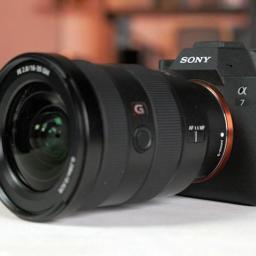 |
by Ian Carlos Campbell on (#71RR4)
Sony appears to be ready to announce another addition to its Alpha camera lineup. The company shared an image on the Sony Alpha Instagram account with the text "Chase your dream" and the date December 2 at 9AM EST, which could be a teaser for its next mirrorless camera.It's possible the company has something else in mind, but the giant "V" or Roman numeral five in the background of the image seems like a clear reference to an unannounced Sony A7 V, a follow-up to the Sony Alpha 7 IV. Considering there was around a four year gap between the release of the A7 III and A7 IV, releasing the new camera in 2026 would make the timing lineup, too.
|
 |
by Kris Holt on (#71RP5)
Indie studio Santa Ragione said it is at risk of shutting down as its latest project won't be available on Steam, which is by far the biggest storefront for PC games and a key point of sale for many developers.Horses, a first-person horror game that blends gameplay and live-action sequences, is about a college student who spends a summer working on a farm. However, the farm's horses" are actually naked human adults who are wearing horse masks. It's clear from the trailer that this is a game for grownups.The studio plans to release Horses on the Epic Games Store, GOG, Itch and the Humble Store on December 2. However, Valve's content review team blocked Horses from Steam."We reviewed the game back in 2023. At that time, the developer indicated with their release date in Steamworks that they planned to release a few months later. Based on content in the store page, we told the developer we would need to review the build itself. This happens sometimes if content on the store page causes concern that the game itself might not fall within our guidelines," Valve told PC Gamer. After our team played through the build and reviewed the content, we gave the developer feedback about why we couldn't ship the game on Steam, consistent with our onboarding rules and guidelines. A short while later the developer asked us to reconsider the review, and our internal content review team discussed that extensively and communicated to the developer our final decision that we were not going to ship the game on Steam."Santa Ragione wrote in an FAQ that it's "committed to producing challenging, adult storytelling. Horses uses grotesque, subversive imagery to confront power, faith, and violence. We reject subjective obscenity standards and believe this kind of moralizing censorship evokes a darker past in which vague notions of 'decency' were used to silence artists. Games are an artistic medium and lawful works for adults should remain accessible. We respect players enough to present the game as intended and to let adults choose what to play; lawful works should not be made unreachable by a monopolistic storefront's opaque decisions."This particular ban precedes the recent censorship of adult-oriented games at the behest of payment processors. Santa Ragione wanted to create a Steam store page for Horses back in 2023 to help build interest. The studio says Valve wanted to see a playable build of the game before it would approve a Coming Soon page. The game was nowhere close to being finished, so Santa Ragione scrambled to put together a playable version of the game with tons of placeholders."According to an email from Valve that the developer shared, it banned Horses from the storefront over "content that appears, in our judgment, to depict sexual conduct involving a minor." Santa Ragione said Valve didn't provide more detailed reasons for rejecting the game. Valve noted that it wouldn't accept further submissions of Horses, "even with modifications."The developer claimed that it spent the next two years trying to change Valve's mind, but the company repeatedly pointed it to Steam's general guidelines and rejected its requests for review and appeal." Santa Ragione does have a plausible theory as to why Valve blocked the game from Steam, however.The studio wrote in the FAQ that:
|
 |
by Danica Creahan,Liz Kocan on (#71RKF)
This Thursday is serving up heaps of turkey, potatoes, and professional football. The NFL has three games on the schedule, all conveniently timed so you'll be able to have football on pretty much from midday until bedtime. For the first game of the day, you can catch the AFC North battle between the Green Bay Packers and the Detroit Lions at 1 p.m. ET, followed by the Kansas City Chiefs vs. Dallas Cowboys at 4:30 p.m. ET. For the evening game, the Cincinnati Bengals visit the Baltimore Ravens, kickoff is at 8:20 p.m. ET. (And don't forget about the Black Friday game between the Chicago Bears and the Philadelphia Eagles, too). Each of these games will be broadcast by different providers, so take note of where you can watch below, and prepare to commandeer the remote control for the day. Here's everything you need to know about how to watch this week's Thanksgiving Day games on every channel and platform. How to watch 2025 Thanksgiving football: Date: Thursday, Nov. 27 Time: 1 p.m., 4 p.m, 8:20 p.m. ET TV channels: NBC, CBS, FOX Streaming: DirecTV, Peacock, Paramount+ Premium, ESPN+ and more Which teams are playing football this Thanksgiving? The NFL Thanksgiving slate will feature three games on Thursday (and a Black Friday game this Friday). First, the Green Bay Packers play the Detroit Lions at 1 p.m. ET on FOX. Later, the Kansas City Chiefs take on the Dallas Cowboys at 4:30 p.m. ET on CBS, and streaming live on Paramount+. Finally, the Cincinnati Bengals will face the Baltimore Ravens at 8:20 p.m. ET on NBC and streaming live on Peacock. On Black Friday, the Chicago Bears play the Philadelphia Eagles at 3 p.m. ET, streaming exclusively on Amazon Prime Video. Here's the full Week 13 NFL schedule, plus how to watch every game: NFL Week 13 TV/streaming schedule: All times Eastern. Thursday, November 27, 2025
|
 |
by Andre Revilla on (#71RKG)
Have you ever been roaming around collecting bananas in Donkey Kong Country on the SNES and thought to yourself, "gee, I wish I could play this game on my shoe." Well designer Gustavo Bonzanini set out to make this dream a reality. To celebrate the 35th anniversary of Super Nintendo's launch in Japan, Bonzanini has created the AIR SNES, a throwback custom pair of Nike Air Max 90 sneakers that doubles as a completely functional SNES console."The idea came after looking at collaborations between sneaker brands and video games. I always asked myself: wouldn't it be cool if these shoes that look like a video game actually double as a console?" Bonzanini said in a press release shared with Engadget.The shoe was created using a Raspberry Pi Zero W running the RetroPie emulator, which Bonzanini customized to fit inside the sneaker's tongue. The shoe has battery capacity for up to 30 minutes of gameplay and sports an integrated HDMI port.For those with nostalgia for old-school display connectors, the shoe also has a small analog converter for RCA connectors. As for controllers, the shoe is compatible with an original SNES gamepad, but you can also use an 8BitDo Mod Kit that connects to the Raspberry Pi wirelessly over Bluetooth.This art project was my way of celebrating both and pushing the idea of what sneaker culture and tech can become when they merge," said Bonzanini. Unfortunately for all of us that would pick up a pair of these in a heartbeat, the AIR SNES is just a one-time creation to celebrate 35 years of one of the greatest consoles ever made.This article originally appeared on Engadget at https://www.engadget.com/gaming/nintendo/a-designer-in-singapore-created-a-functional-snes-inside-a-wearable-nike-sneaker-192907456.html?src=rss
|
 |
by Will Shanklin on (#71RKH)
With the gaming industry's recent rash of layoffs, closures and cancellations, it would be easy to assume Beyond Good and Evil 2 is toast. After all, the game looked like vaporware even before the extreme cost-cutting trend started. But here we are in late 2025, and - lo and behold - Ubisoft is hiring for the prequel.The job listing (via Eurogamer) is for a technical sound engineer. But aside from revealing that the game is apparently still in the works, the description doesn't tell us anything new. "Beyond Good & Evil 2 is an action-adventure open world game set in a captivating space opera universe and the direct prequel to the 2003 cult classic," the posting reads. "Based on a breakthrough technology driven by the proprietary Voyager engine, Beyond Good & Evil 2 aims to offer a seamless experience of exploration and space piracy across a solar system full of exotic locations, colorful characters and mysteries to uncover, solo or with friends."Ubisoft first teased the prequel in 2008, then officially announced it in 2017. Engadget even watched a closed-door gameplay presentation the following year. We described what we saw as "wildly ambitious," perhaps to a concerning degree, given the technical challenges tied to that scope. Those worries appear to have been warranted, as we still hang onto tiny nuggets of hope (look, a job posting!!) over seven years later.In 2022, Bloomberg poured more cold water on its timeline, reporting that the game was still in pre-production. Engadget contacted Ubisoft for comment on its current status, and we'll update this story if we hear back. In the meantime, you can revisit the surge of hope that was the game's 2018 cinematic trailer.This article originally appeared on Engadget at https://www.engadget.com/gaming/beyond-good--evil-2-is-somehow-still-under-development-185230052.html?src=rss
|
 |
by Kris Holt on (#71RGX)
Sony has revealed the final batch of PlayStation Plus Monthly Games for 2025. This time around, you'll be able to add five games to your library instead of the usual three. As ever, you'll retain access to claimed games as long as your subscription remains active.The headliner this time around is Lego Horizon Adventures (PS5), which is a more family-friendly take on the Horizon series. Guerrilla Games and Studio Gobo gave the events of Horizon Zero Dawn a Lego flavor in this spinoff, which is the first co-op game in the series (an MMO is in the pipeline too). I've been meaning to check this out, so it'll be an easy addition to my library.The same goes for Neon White (PS4 and PS5), a fast-paced precision platformer and first-person shooter that's also part-dating sim. Each level is a race to the exit but you'll need to defeat every demon in the stage first.There are a couple of first-person co-op horror games in the December lineup. Those are the action-focused title Killing Floor 3 (PS5) and the psychological survival horror The Outlast Trials (PS4 and PS5). The final entry in the Monthly Games lineup this time around is extraction shooter Synduality Echo of Ada (PS5). That could help you scratch an Arc Raiders-shaped itch if you don't fancy shelling out for that particular game right now.All five games will be available for PS Plus Essential, Extra and Premium members to snag on December 2 and they'll remain up for grabs until January 5. You still have until December 1 to scoop up November's PS Plus Monthly Games, which are EA Sports WRC 24, Totally Accurate Battle Simulator and the wonderful Stray.At the beginning of this year, Sony said it planned to stop offering PS4 games as a key benefit" on the PS Plus Monthly Games and Game Catalog lineups as of January 2026. While it might add PS4 games from time to time, the onus for PS Plus going forward will be on PS5 (and perhaps some PS VR2) games. Of course, any PS4 Monthly Games that you've claimed will still remain available for download as long as your PS Plus subscription remains active.This article originally appeared on Engadget at https://www.engadget.com/gaming/playstation/decembers-ps-plus-monthly-games-include-lego-horizon-adventures-and-neon-white-174500131.html?src=rss
|
 |
by Lawrence Bonk on (#71RGY)
EU member states have agreed on a position regarding online child protection legislation that doesn't force global tech companies to identify and remove child sexual abuse materials (CSAM.) This is being seen as a major victory for US tech companies like Google and Meta, according to reporting by Reuters.This new European Council language contradicts a 2023 position in which the European Parliament would have required messaging services, app stores and ISPs to report and remove CSAM materials and instances of grooming. The proposed legislation doesn't have any of that.Instead, it tasks major tech companies with assessing the risk of their services, taking preventative measures as deemed necessary. It leaves enforcement up to individual national governments and not the EU governing body."Member states will designate national authorities ... responsible for assessing these risk assessments and mitigating measures, with the possibility of obliging providers to carry out mitigating measures," the European Council wrote in a statement. "In the event of non-compliance, providers could be subject to penalty payments."There's no language here regarding the enforced scanning of encrypted materials for CSAM, which was an idea being discussed as recently as last year. However, there is some language that suggests encryption services must be safeguarded. Some detractors, like the Czech Republic, suggest that the Council's idea to allow tech entities to essentially self-police content could actually hurt encryption platforms.This is "a great disappointment for everyone who cares about privacy," Czech politician Marketa Gregorova wrote in a statement. "The Danish presidency has pushed through a compromise version of the proposal after long negotiations, which, while appearing to be less invasive, actually paves the way for what we have long warned against: the blanket scanning of our private conversations."The proposed law does, however, establish something called the EU Center on Child Sexual Abuse. This organization would have a mandate to help countries comply and provide assistance for victims. The European Parliament also recently called on the EU to set minimum ages for kids to access social media, but there's no current law in the works.All of this isn't a done deal just yet. The Council now must enter into negotiations with the Parliament.This article originally appeared on Engadget at https://www.engadget.com/big-tech/eu-backs-away-from-requiring-tech-companies-to-scan-and-remove-csam-173133351.html?src=rss
|
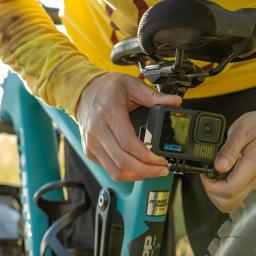 |
by Lawrence Bonk on (#71FM7)
The GoPro Hero 13 Black action camera is down to $310 as part of an early Black Friday sale, which is a record low price. That's a discount of 23 percent or $90. This model topped our list of the best action cameras, and for good reason. It's a fantastic device with all kinds of bells and whistles. It's the most versatile Hero camera that GoPro has ever made. There's a new family of modular lenses and it can shoot up to 5.3K and handle 2X optical zoom. The battery is bigger than ever before and offers around 90 minutes of continuous shooting in 4K/30FPS. The camera is waterproof up to 10 millimeters, so don't worry about puddles. The full-color front screen is vivid and makes it easy to review footage without getting a computer involved. There's no internal storage here, but it accepts microSD cards. There's a camera bundle on sale right now that includes a 64GB microSD, three batteries, a dual charger and a case. That pack costs $349, which is a discount of 30 percent. This article originally appeared on Engadget at https://www.engadget.com/deals/get-our-favorite-action-camera-for-an-all-time-low-price-for-black-friday-160154667.html?src=rss
|
 |
by Lawrence Bonk on (#71KT4)
If you've been thinking about jumping on the smart glasses bandwagon, Black Friday deals could help you do so for less. Xreal has discounted its One Pro smart glasses by $50 for Black Friday, bringing them down to $599. The sale applies to both sizes. These glasses are the real deal. We praised them in our official review, saying they offer similar functionality to the Apple Vision Pro, but at a much friendlier price point. Wearing these glasses allows access to a massive 222-inch virtual display that can be used for just about anything. The glasses connect to laptops, gaming consoles and smartphones, among other gadgets. The 1080p Micro-OLED screens are surprisingly bright and sharp, which makes this device great for both work and consuming content. The frames even darken to give the illusion of wearing sunglasses. The glasses are light and comfortable, especially when compared to the Vision Pro. However, the comfort does come at a price. These oversized glasses are not as immersive as Apple's product, because they don't completely block out light and cover the entire face. They offer a 57-degree field of view. This is squarely an augmented reality product and not a virtual reality product. The company has also discounted its Xreal One AR glasses to $399, which is a discount of around $100. These offer smaller virtual screens than the Pro, with a 50-degree field of view. Elsewhere in the smart glasses space, the Meta Ray Ban Gen 1 glasses are 20 percent off for Black Friday as well. This article originally appeared on Engadget at https://www.engadget.com/deals/black-friday-deals-include-the-xreal-one-pro-smart-glasses-for-a-record-low-price-113032857.html?src=rss
|
 |
by Will Shanklin on (#71KR6)
It's a good time to pick up a robot vacuum on sale for Black Friday. Shark machines are some of our favorites, and we're seeing a number of models discounted for Black Friday. But this one, the Shark AI Ultra robot vacuum, is probably the best deal for most people this year. It's 58 percent off and down to an all-time low of $250. One of this model's standout features is its bagless design. Like many robovacs, it has an auto-empty station. But here, you can remove part of the base, dump its contents in the garbage, and lock it back in place. The base holds up to 60 days of dirt and debris, and you'll never need to order bag refills. The Shark AI Ultra has strong suction and decent obstacle avoidance (via LiDAR). The robovac cleans in a matrix grid. It auto-maps your home and supports Google Assistant and Alexa for voice control. The vacuum has a runtime of about 120 minutes. (If it needs to stop and charge, it will auto-resume afterward.) Also note that this is a vacuum-only model: no mopping here. But Shark has other Black Friday deals if you're interested in a robovac that also mops, or even a cordless stick vacuum instead. The Shark Stratos 2-in-1 robot vacuum and mop is 55 percent off and down to $450 right now, while the Power Detect Pet Plus cordless vacuum with self-emptying base is down to $400. This article originally appeared on Engadget at https://www.engadget.com/deals/get-58-percent-off-one-of-our-favorite-shark-robot-vacuums-this-black-friday-100013956.html?src=rss
|
 |
by Cheyenne MacDonald on (#717HK)
One of the best streaming devices you can get today is deeply discounted on Amazon ahead of Black Friday. The Google TV Streamer is going for just $75 right now - the lowest price we've seen it hit yet. The device normally costs $100. The Google TV Streamer is our top pick for an all-in-one streaming device. It has a faster processor than Google's previous streaming devices (22 percent faster, according to the company), so you can switch between apps and different media without lagging. It also has more storage and memory, at 32GB and 4GB, respectively. Google TV streamer has an intuitive interface and keeps all of your favorite content from different streaming apps organized in one menu. It also seamlessly integrates Google Home, allowing you to control your smart home devices from a slideout panel on the TV. The 4K streamer comes in a set-top wedge design, rather than the dongle of Chromecasts past, but you'll have to pick up an HDMI cable separately if you don't already have one you can use. It comes with a small remote that you can ping by pressing a button on the streamer for when you inevitably misplace it. In her review of the device, Engadget's Amy Skorheim called the Google TV streamer "a full-featured, competent device with an interface that's better than most at pulling together all the disparate threads of a streaming experience." One of its only downsides is the relatively high cost at $100, so don't let this deal go to waste. In addition to the streaming device, Google has a bunch of other tech on sale for Black Friday. The entry-level Nest thermostat is on sale for $85 right now, and the Nest Wi-Fi Pro 6E router has dropped to $120 for a single-pack; that's 40 percent off. This article originally appeared on Engadget at https://www.engadget.com/deals/black-friday-deals-include-the-google-tv-streamer-4k-for-75-173858263.html?src=rss
|
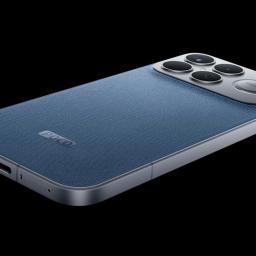 |
by Mariella Moon on (#71R8N)
Back in 2018, Xiami launched Poco as a sub-brand that specializes in mid-range smartphones. Now, Poco has launched its first premium flagship phone series, the F8 Ultra and the F8 Pro, at an event in Bali. Both devices will use Sound by Bose technology, thanks to a partnership with the brand, and runs Xiaomi HyperOS 3. Kang Lou, Poco Global's Senior Product Marketing Manager and Spokesperson, said the F8 Ultra sets a new benchmark for true flagships." Meanwhile, the F8 Pro will make all-round flagship experiences accessible to more users."The 6.9-inch Poco F8 Ultra has a dual-chipset architecture, consisting of the Snapdragon 8 Elite Gen 5, Qualcomm's latest flagship mobile platform, and the VisionBoost D8 chipset that enables AI Super Resolution for crisper, more detailed images." It uses Poco's new HyperRGB display, which the company says uses a full RGB subpixel structure wherein red, green and blue subpixels are fully used. Another notable feature is its 6500mAh battery, which is the largest yet on a Poco F series phone. The Ultra version comes in a Denim" variant, though it doesn't actually use denim: Its back was merely designed to look like it's covered in the fabric, but it actually uses a special Xiaomi nanotech material.Meanwhile, the 6.59-inch Poco F8 Pro has a subtle micro-curved design, wherein its edges transition into its back panel. It's powered by the Snapdragon 8 Elite Mobile Platform and comes with a 6210mAh battery that can last for 16 hours of continued use. Both models are now out in the UK. The Poco F8 Ultra will set you back at least 749, while the F8 Pro will cost you at least 549. In the US, the F8 Ultra with 12GB of memory and 256GB of storage will cost you $729, while the one with 16GB of memory and 512GB of storage will cost you $799. It will be $579 for the F8 Pro with the lower specs and $629 for the one with the higher specs. Poco is giving discounts that shave at least $50 off their price for early buyers, but it has yet to announce a release date for the US.This article originally appeared on Engadget at https://www.engadget.com/mobile/smartphones/pocos-new-flagship-phone-has-a-bose-subwoofer-and-a-denim-option-130811181.html?src=rss
|
 |
by Danica Creahan,Liz Kocan on (#71R8Q)
The Radio City Rockettes will be among the performers at this year's Macy's Thanksgiving Parade. Here's how to watch. (Peter Kramer/NBC via Getty Images) NBC via Getty Images Every holiday has corresponding must-watch TV associated with it, from It's The Great Pumpkin, Charlie Brown at Halloween, Rudolph The Red-Nosed Reindeer at Christmas, and the annual Macy's Thanksgiving Day Parade airing on the last Thursday in November. This year marks the 99th Macy's Thanksgiving Day Parade, and the festivities begin at 8:30 a.m. ET this Thursday, Nov. 27. The parade will be broadcast on NBC and streams live - with a three-angle multi-view option - on Peacock. Performers will include Wicked's Cynthia Erivo, Lainey Wilson, Ciara, and more. Oh, and if you've got KPop Demon Hunters fans in your life, not only will there be balloons featuring Derpy and Sussie, the parade will feature a performance by EJAE, Audrey Nuna, and REI AMI, the singing voices of HUNTR/X. Here's everything you need to know about how to watch the 99th Macy's Thanksgiving Day Parade live this week, and how to catch the encore if you miss it. When is the 2025 Macy's Thanksgiving Day Parade? The 2025 Macy's Thanksgiving Day Parade is held this year - and every year - on Thanksgiving Day. This year, the parade is on Thursday, November 27, starting at 8:30 a.m. ET/5:30 a.m. PT. There will be an encore broadcast at 2 p.m. ET/PT. How long is the Macy's Parade? The Macy's Thanksgiving Day Parade will last roughly 3.5 hours, ending at 12 p.m. ET/9 a.m. PT. An encore broadcast will air on NBC at 2 p.m. ET/PT. What channel is the 2025 Macy's Thanksgiving Day Parade on? The Macy's Thanksgiving Parade will air on NBC and stream on Peacock on Thanksgiving Day from 8:30 a.m. to noon in all time zones. An encore airing of the parade will also begin at 2 p.m. on NBC. If you have access to live TV, you may be able to watch NBC for free over the air. If not, here's what we recommend for how to watch the Thanksgiving Day Parade. How to watch the Macy's Thanksgiving Day Parade without cable: Who is performing at the Macy's Thanksgiving Day Parade? Wicked star Cynthia Erivo will open the parade, which will also feature performances from Country artist Lainey Wilson, EJAE, Audrey Nuna, and REI AMI (the singing voices of HUNTR/X from Netflix's KPop Demon Hunters), Drew Baldridge, Matteo Bocelli, Colbie Caillat, Ciara, Gavin DeGraw, Meg Donnelly, Mr. Fantasy, Foreigner, Debbie Gibson, Mickey Guyton, Christopher Jackson, Jewel, Lil Jon, Kool & the Gang, Darlene Love, Roman Mejia, Taylor Momsen, Tiler Peck, the Radio City Rockettes, Busta Rhymes, Calum Scott, Shaggy, Lauren Spencer Smith, Luisa Sonza and Teyana Taylor. There will also be performances from the Broadway casts of Buena Vista Social Club, Just in Time and Ragtime. What floats are in the Macy's parade this Thanksgiving? There will be 32 balloons, three "balloonicles," 27 floats, 33 clown groups, 11 marching bands and plenty of performances at the 2025 Macy's parade. 2025 Macy's Thanksgiving Parade new floats Six new floats are debuting at this year's parade:
|
 |
by Will Shanklin on (#71EGZ)
Amazon has Black Friday savings on its most potent streaming stick. The Fire TV Stick 4K Max is 41 percent off, bringing it close to its record low. You can get it now for $35. The Fire TV Stick 4K Max is one of Engadget's favorite streaming devices. The stick supports a solid mix of advanced technologies for its price: Dolby Vision, Dolby Atmos, 4K and HDR10+. As long as the rest of your entertainment setup can handle it, you'll get a high-quality picture and sound. It also supports Wi-Fi 6E, enabling better, faster connectivity with compatible routers. The 4K Max has the fastest processor of any Amazon Fire TV Stick, so expect zippy navigation. It also supports Amazon's Ambient Experience. This mode displays art (like on Samsung's The Frame) while the device is in standby. It's also a solid choice for gaming: It supports Xbox cloud streaming and works well as a retro game emulator, too. The UI is where Amazon appears to be subsidizing the device's low cost. Expect to see loads of Prime Video content promos, along with other ads. But for $35 (compared to its MSRP of $60), you may find it easier to justify that tradeoff. Also on sale is Amazon's Fire TV Stick HD, our pick for the best budget streaming stick. This model doesn't support 4K; instead, it limits you to 1080p at 60 fps. At $18 for Black Friday, it's certainly cheap. But if you have a 4K TV (or plan to soon), you may want to consider the slightly more expensive model. This article originally appeared on Engadget at https://www.engadget.com/deals/the-fire-tv-stick-4k-max-is-on-sale-for-35-in-amazons-black-friday-deals-132100693.html?src=rss
|
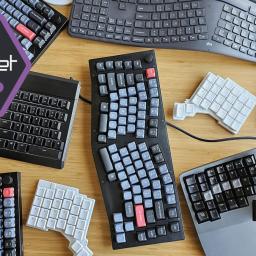 |
by Amy Skorheim on (#6KZJV)
I've dealt with neck pain since my early 20s. Becoming a full-time writer in my late 30s did not help matters. I discovered the concept of a split ergonomic keyboard and wondered whether one could stop my shoulders from bunching up around my ears. It did.
|
 |
by Billy Steele on (#5NRJ8)
Wireless earbuds have become the go-to choice for listening on the move. Whether you're at the gym, commuting or relaxing at home, the best wireless earbuds give you comfort, freedom and solid sound quality without tangled cables. They're lightweight, slip easily into your pocket and connect quickly to your phone, tablet or laptop.
|
 |
by Will Shanklin on (#71KT3)
Black Friday is as good a time as any to upgrade your home audio setup. You can get the Sonos Era 300, the company's only standalone speaker with spatial audio, for $379. That's $100 off what Engadget's Nathan Ingraham called "a great speaker, whether or not it is playing songs in Dolby Atmos." That Dolby reference points to the Era 300's core novelty. It produces spatial audio without requiring additional speakers. (You can use Apple Music or Amazon Music to stream compatible tracks.) Expect those Dolby Atmos tracks to sound better with newer music than older songs remixed for Dolby's tech. Even if you don't bother with its spatial tricks, the Era 300 is a terrific-sounding speaker. It delivers rich, detailed and balanced audio that can hang with just about anything else Sonos offers. The speaker supports voice control via Alexa or Sonos Voice Control. It also offers Trueplay tuning, which listens to how your room shapes the sound and adjusts accordingly. In this model, you don't need to use your phone: Its built-in mics scan your room for you. That's especially handy for Android users, since phone-based Trueplay (from other models) is iOS-only. If the Era 300 is a bit out of your budget, Sonos has loads of other products on sale for Black Friday. You can get the smaller - but still mighty - Era 100 for $169 (23 percent off). The portable Move 2 is down to $399 (20 percent off). Even the company's headphones, Sonos Ace, are on sale for $279 (30 percent off). Sonos home theater products are discounted, too. You can get the Arc Ultra soundbar for $879 (20 percent off), or the Sub 4 subwoofer for $719 (also 20 percent off). Or, if you're in the market for both and have the budget, save even more on a bundle: Get the Arc Ultra and Sub 4 for $1,499 (25 percent off). This article originally appeared on Engadget at https://www.engadget.com/deals/sonos-black-friday-deals-the-era-300-speaker-is-on-sale-for-100-off-plus-more-discounts-120048014.html?src=rss
|
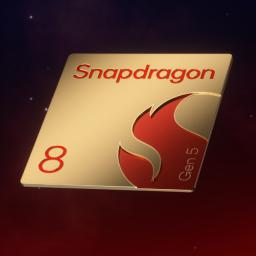 |
by Lawrence Bonk on (#71R2T)
Qualcomm just revealed the Snapdragon 8 Gen 5, the appropriately-named second member of the Snapdragon 8 Gen 5 line. This follows the Gen 5 Elite, which was first revealed back in September.The standard Gen 5 is still a powerful mobile system-on-a-chip (SoC) with a top clock speed of 3.8GHz. That's slightly lower than the Elite's top speed of 4.6GHz, but still nothing to sneeze at. It includes a custom-built Oryon CPU and boasts speed-enhancing features like matrix acceleration. The company says the platform offers a 36 percent performance improvement when compared to Snapdragon 7, along with a 76 percent increase in web browsing responsiveness.QualcommThe SoC also features the Qualcomm Adreno GPU, just like the Elite, which "unlocks higher clock speeds and boosts gaming and graphics performance by 11 percent." This is a chip intended for modern smartphones, so it also has been designed for AI. It boasts the company's proprietary Sensing Hub technology that combines microphone and sensor inputs to detect a user's intent to speak.It's capable of on-device AI processing due to the Qualcomm Hexagon NPU. The company says this will enable "agentic AI assistants to deliver context-aware interactions and personalized suggestions." That's corporate speak for "it does stuff and says stuff."QualcommQualcomm says these chips will begin showing up in mobile devices in "the coming weeks." The company named OnePlus as a partner and that organization did just announce a brand-new smartphone that was suspiciously devoid of any real specs.This article originally appeared on Engadget at https://www.engadget.com/ai/the-snapdragon-8-gen-5-is-a-cut-down-version-of-qualcomms-flagship-elite-chipset-063050786.html?src=rss
|
 |
by Ian Carlos Campbell on (#71QWK)
Following its licensing deal with Udio, Warner Music Group (WMG) has also reached an agreement with Suno that will let the platform license its artists' music and likenesses, and end the music company's ongoing litigation. WMG was previously one of several record labels suing Udio and Suno for allegedly infringing on copyrighted works at a "massive scale."As part of the agreement, "artists and songwriters will have full control over whether and how their names, images, likenesses, voices, and compositions are used in new AI-generated music," WMG explains in its press release for the announcement. WMG doesn't spell out how that will work for musicians impacted by the deal, but it does appear that participation will be opt-in, rather than anything being shared by default. This mirrors the opt-in structure of the company's Udio deal."AI becomes pro-artist when it adheres to our principles: committing to licensed models, reflecting the value of music on and off platform, and providing artists and songwriters with an opt-in for the use of their name, image, likeness, voice and compositions in new AI songs," WMG CEO Robert Kyncl says.Suno will also make adjustments to its AI music platform, possibly as a condition of the new partnership. WMG says Suno is launching "new, more advanced and licensed models" in 2026, after which its current models will be deprecated. The company will also limit music downloads to paid accounts. "In the future, songs made on the free tier will not be downloadable and will instead be playable and shareable. Paid tier users will have limited monthly download caps with the ability to pay for more downloads," WMG says.In an odd wrinkle to the partnership, Suno is also acquiring WMG's Songkick concert discovery platform. The company plans to continue running it, and WMG claims that "the combination of Suno and Songkick will create new potential to deepen the artist-fan connection." An app for finding nearby concerts doesn't totally square with Suno's existing music creation tools, but maybe it suggests the company is interested in offering more social features down the road.Prior to this agreement, Suno openly admitted to using "essentially all music files of reasonable quality that are accessible on the open internet" to train its AI model, under the auspices of fair use. That seems like a pretty blatant admission of copyright infringement, but apparently Warner Music Group is happier with the deals it struck than what it could have won through its lawsuit. The company is reportedly one of several music groups looking to strike a similar deal with YouTube.This article originally appeared on Engadget at https://www.engadget.com/entertainment/music/warner-music-drops-lawsuit-against-ai-music-platform-suno-in-exchange-for-licensing-agreement-224619025.html?src=rss
|
 |
by Will Shanklin on (#71QT4)
A brand spanking-new FoloToy teddy bear can be yours once again. However, he may now be less knowledgeable about spanking. The infamous "Kumma" children's AI teddy bear, once an expert in BDSM and knife-fetching, is back on sale. The company claims the toy now has stronger child safety protections in place.The Singapore-based FoloToy suspended sales of Kumma last week after a research group published an eyebrow-raising report. The PIRG Education Fund found that the fuzzy little teddy had a few spicy secrets.The review discovered that the AI toy had a thing for blades and kinky bedroom play. The bear had no problem suggesting where to find knives in the home. And it not only replied to sexual prompts but also expanded on them. Researchers say it ran with their explicit cues, escalating them in graphic detail and "introducing new sexual concepts of its own." It explained sex positions, gave step-by-step instructions for sexual bondage and detailed various role-playing scenarios. Who knew Kumma had it in him?Marketing photo of a child grinning, looking at a teddy bear on a counch.FoloToyAlthough it's hard not to laugh at the absurdity of it all, this stuff is no joke for parents. With the tech industry pushing AI everything on us for the last three years, it's easy for a casual observer to conclude that it's all very safe, regulated and ready for vulnerable eyes and ears. PIRG did acknowledge that young children were unlikely to have prompted the bear with a term like "kink." (Older siblings may have been another story.) Still, the group's tests highlighted a shockingly lax approach to content moderation on a child's toy.In its statement announcing Kumma's return, FoloToy boasted that it was the only company of the three targeted in the review to suspend sales. (Could it be that it's less about principles and more about it being the only one that got media coverage?) The company described the bear's short hiatus as "a full week of rigorous review, testing and reinforcement of our safety modules." Wait, a whole week? Whoa there, partner!!Before his trip to AI rehab, Kumma was advertised as being powered by GPT-4o. Following PIRG's review, OpenAI told the organization that it had suspended FoloToy for violating its policies. The bear's new listing makes no mention of GPT-4o or any specific AI models.This article originally appeared on Engadget at https://www.engadget.com/ai/folotoys-ai-teddy-bear-is-back-on-sale-following-its-brief-foray-into-bdsm-213138383.html?src=rss
|
by Ian Carlos Campbell on (#71QT5)
Perplexity is rolling out a new shopping feature to make buying things through its AI assistant easier and more personalized. The company's new feature is free for all Perplexity users in the US and builds on Perplexity's existing relationship with payment provider Paypal.The new shopping experience lets Perplexity users conduct more personalized product searches, like asking "What's the best winter jacket if I live in San Francisco and take a ferry to work?" Perplexity says its assistant can keep the context of your chat in mind as it searches for products, and incorporate details it's learned about your life and preferences to tailor results. Once the assistant has found products it wants to show you, it can then present them in nicely formatted product cards, with pros and cons about each jacket, for example, and other relevant details pulled from reviews and guides.If one of the products Perplexity finds seems like the right fit, you can also purchase the product directly through the company's assistant, and pay with payment details stored in a PayPal account. This "Instant Buy" experience provided by Perplexity and PayPal extends to all merchants who offer PayPal as a payment method. While that sounds like it could make a key element of the shopping experience obsolete for these online stores (you never actually visit their website), Perplexity claims merchants still own the most important parts. "They have full visibility into who their customer is, can process returns, build loyalty, and own the post-purchase relationship, just as they would on their own sites," the AI company says.Perplexity's push into online shopping is similar to the "shopping research" feature OpenAI recently added to ChatGPT, and new product recommendation features Google's added to AI Mode in Google Search. While all these tools are pitched as a more personalized alternative to the shopping guides you'll find on Engadget and other editorial sites, they often work under the same logic. By referring someone to a product, AI companies hope to receive a payment or a fee from the transaction if the person makes a purchase.Ultimately, Perplexity is equally interested in offering an end-to-end solution, where it finds and purchases products without a human needing to step in. The company received a cease-and-desist from Amazon at the beginning of November for letting the agent in its Comet browser complete Amazon purchases on users' behalf.This article originally appeared on Engadget at https://www.engadget.com/ai/perplexity-announces-its-own-take-on-an-ai-shopping-assistant-210500961.html?src=rss
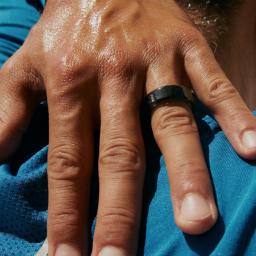 |
by Lawrence Bonk on (#71MQF)
Oura is hosting a Black Friday sale on many of its more popular smart rings. Perhaps the most notable deal is for the Oura Ring 4, which is down to $249. This is a discount of 29 percent, as it typically costs $349. The sale applies to the black colorway. The Ring 4 actually topped our list of the best smart rings, and with good reason. It's comfortable to wear for long periods of time, which is always nice. It's a visually striking ring. We also appreciated the size options, as it fits fingers from size 4 to 15. As for functionality, this smart ring tracks a number of health and fitness metrics. The affiliated app will send out notifications when it thinks you need a rest or to remind you to exercise. It keeps an eye on sleep, heart rate, stress, body temperature, menstrual cycle and a whole lot more. The battery lasts around a week, which is always nice when taking a quick vacation. The only downside here, and this applies to all Oura rings, is that many features are locked behind a subscription paywall. This costs $6 a month or $70 per year. The company is also selling the gold version of the Ring 4 for $349, which is a discount of $50. The water-resistant Stealth Oura Ring 4 is down to $299, which is a discount of $100.This article originally appeared on Engadget at https://www.engadget.com/deals/oura-smart-rings-are-on-sale-for-up-to-30-percent-off-this-black-friday-123010141.html?src=rss
|
by Will Shanklin on (#71QT6)
Games Done Quick has wrapped up its 2025 events, but a new year of speedrunning for charity is on the horizon. The organization released the schedule for Back to Black 2026 on Tuesday. You can watch the action from February 5 to 8.As its name suggests, the event celebrates the Black community through the joy of gaming. Organized by Black in a Flash, the event will showcase all-Black speed runs of titles ranging from popular to obscure.There are plenty of fun runs on the schedule. Someone will take on Hades II, one of the best games of 2025. Then there's Cuphead, an excruciatingly difficult title even when you have all the time in the world. The schedule has some retro games, like Donkey Kong Country, Street Fighter 2 and Sonic Heroes. You'll also find some little-known ones, like the 1996 Sega Saturn weirdfest, Mr. Bones.This year's shindig will support Race Forward, a nonprofit working toward racial equity. Last year's Back to Black event raised $44,000 for the same charity.This article originally appeared on Engadget at https://www.engadget.com/gaming/games-done-quicks-back-to-black-event-returns-in-february-201500830.html?src=rss
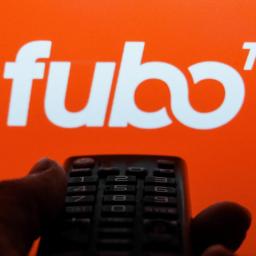 |
by Andre Revilla on (#71QT7)
Fubo has issued a statement on its latest row with NBCUniversal over a carriage dispute involving NBC's most popular channels. This past Friday, NBCU networks went dark on Fubo across both live and on-demand services. Fubo subscribers trying to watch NBC content were met with a message that read, We are working hard to bring this channel back. We are currently negotiating with NBCUniversal and are hopeful that we'll bring this channel back to you soon."Today, Fubo said it has been engaged in good-faith negotiations with NBCUniversal to renew a content agreement for its networks. Fubo said that NBCU's demands, however, would harm its customers, and that the streaming company has not agreed to the proposed terms."NBCU is spinning off some of their cable networks into a new company called Versant on Jan 1, 2026. Despite them not being worth the cost to Fubo subscribers, Fubo offered to distribute Versant channels for one year. NBCU wants Fubo to sign a multi-year deal - well past the time the Versant channels will be owned by a separate company. NBCU wants Fubo subscribers to subsidize these channels," the statement reads.The statement goes on to accuse NBCU of discriminating against Fubo and its subscribers by allowing YouTube TV and Amazon Prime Video to integrate Peacock into the popular streaming services, while not extending the same rights to Fubo. In a blog post yesterday, Fubo said the terms on pricing and packaging being offered by NBCUniversal were "egregiously above those offered to other distributors.""Fubo has chosen to drop NBCUniversal programming despite being offered the same terms agreed to by hundreds of other distributors. Unfortunately, this is par for the course for Fubo - they've dropped numerous networks in recent years at the expense of their customers, who continue to lose content," an NBCUniversal spokesperson told Engadget when asked to comment on Fubo's accusations.The company also pointed to ten major drops that Fubo has incurred over the past five years including Discovery networks and AMC. A full list of channels that are still dark on Fubo can be found here.This article originally appeared on Engadget at https://www.engadget.com/entertainment/streaming/fubo-accuses-nbcuniversal-of-egregious-demands-amid-carriage-dispute-193515241.html?src=rss
|
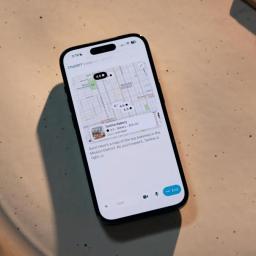 |
by Ian Carlos Campbell on (#71QQZ)
OpenAI has announced that it's changing how ChatGPT's Voice mode works on the web and inside the company's app. As part of an update, you can interact with ChatGPT Voice directly within your ongoing chat, letting you see a transcript of your conversation with OpenAI's AI model, along with visuals that demonstrate whatever ChatGPT is talking about.You can start a voice chat just by tapping or clicking on the "waveform" icon next to ChatGPT's text field. Rather than launching into the original orb-filled interface the feature launched as, voice chats now happen in-line with whatever you were previously discussing. In the demo video OpenAI shared alongside the announcement, ChatGPT was able to display a transcript of the conversation, followed by a map listing popular bakeries and photos of pastries sold at Tartine. OpenAI says that if you prefer the original Voice interface, you can switch back to it by toggling on Separate mode under the Voice Mode section of ChatGPT's Settings.
|
 |
by Lawrence Bonk on (#71QR0)
The upcoming Multiplayer Online Battle Arena (MOBA) game Spellcasters Chronicles will be available to play as a closed beta starting on December 4 until December 8. This is the first closed beta weekend for the free-to-play game and the first online play test, as it was originally announced just a couple of months back.Spellcasters Chronicles is being developed by Quantic Dream and looks like the company's attempt to compete with big-time MOBAs like League of Legends and Dota. This is a fairly strange title for Quantic Dream, given that the studio is primarily known for narrative games that rely heavily on player choice. The company has been behind games like Heavy Rain and Detroit: Become Human.In other words, the 3 vs. 3 MOBA with a third-person perspective is an odd duck and we have no idea how it'll play. Luckily, we'll know a whole lot more next weekend. The closed beta takes place on Steam and grants access to six player classes, each with unique abilities. These classes "can summon creatures, cast spells and take fight to command the arena." There's a class called "Swamp Witch" that I'd very much like to play as.The beta will also unveil a new arena called The Mausoleum and introduce the game's deck-building component. The arena battles will last 25 minutes, with teams being tasked to capture altars to gain enemy territory.This is just the first closed beta for Spellcasters Chronicles. The developer promises a second beta early next year. That next one will introduce new character classes, arenas, spells and summons.As for Quantic Dream, it's still developing Star Wars: Eclipse. However, we haven't heard a blip about it in years.This article originally appeared on Engadget at https://www.engadget.com/gaming/pc/you-can-try-quantic-dreams-upcoming-moba-during-a-closed-beta-next-week-194038411.html?src=rss
|
by Will Shanklin on (#71QR1)
Google is making The Thinking Game, a 2024 Tribeca Festival selection about DeepMind, available for free. The nearly 90-minute documentary offers a glimpse into the AI team's background and breakthroughs.The film, from the same team as the 2017 AlphaGo doc (also on YouTube), was shot over five years. It chronicles Nobel winner Demis Hassabis' beginnings as a chess prodigy and how that shaped his entry into AI. You'll see DeepMind's journey from building AI that (slowly) learned Pong to one that accurately predicted how proteins fold.You can watch The Thinking Game below or on YouTube.This article originally appeared on Engadget at https://www.engadget.com/ai/you-can-now-watch-a-google-deepmind-doc-for-free-184911659.html?src=rss
 |
by Andre Revilla on (#71QJA)
IKEA has teamed up with Swedish designer Tekla Evelina Severin on a new line of products dubbed the Teklan collection. The collaboration includes three new standalone Bluetooth speakers and two lamp speakers, each clad in Severin's distinctive colorful style. The company originally announced this family of products at the start of the year with an expected launch in early 2026, so it seems they will hit shelves ahead of schedule. The ready-to-assemble furniture giant has already released a few speakers since ending its partnership with Sonos earlier this year, but this feels like a more concentrated push to replace those old Sonos products.A line of round speakers IKEA is calling the Solskydd will be available in three different sizes, each sporting a colorful geometric design. The smallest of the three will be an 8-inch portable speaker with a rechargeable battery, and will retail for $80, while the larger two, measuring 11 and 18 inches, will sell for $100 and $140 respectively and will require a wall outlet.The smaller of the two can be displayed either hung or on its accompanying base, while the largest version is designed for wall mounting. The Solskydd will also be offered in a plain white version for customers who prefer a more understated aesthetic. The speakers can all connect to one another as well as any other compatible IKEA Bluetooth speaker for multi-speaker mode. Spotify Tap is also supported, letting users pick up right where they left off in their music from within the Spotify app.The Teklan collection will also include a set of Bluetooth speaker lamps, called the Kulglass. The $130 lamps, whose shades IKEA says were inspired by soft-serve ice cream, come in shades of either green or red and feature a built-in volume knob.The line also includes a vibrant take on the budget-friendly Vappeby Bluetooth speaker, which is both waterproof and ultra-portable. The Teklan lineup also includes a slew of braided charging cables. Both of these products were released earlier this year. The new products in the Teklan collection will arrive in December, with exact launch dates varying by market.This article originally appeared on Engadget at https://www.engadget.com/audio/speakers/ikea-is-releasing-a-new-family-of-bluetooth-speakers-in-partnership-with-swedish-designer-tekla-severin-160800338.html?src=rss
|
 |
by Mariella Moon on (#71QFH)
The Shenzhou-22 spacecraft that China launched on November 25 has already reached the Tiangong space station, according to SpaceNews and Chinese state media. Now that it's docked with the station, the astronauts onboard are no longer left without a vehicle that they can use to head home in case of emergencies. The astronauts part of the Shenzhou-21 mission haven't had a lifeboat since November 11, because the team before they arrived had to use their vehicle to return to Earth.On November 5, the astronauts from the Shenzhou-20 mission were supposed to make their way back home aboard their own spacecraft. But just hours before their departure from the station, China's space agency discovered minor cracks in their vehicle's window from a suspected debris impact. The Shenzhou-20 crew flew back to Earth on November 11 using the Shenzhou-21 vehicle, which means the newer team stayed in the station with no way to leave for over 10 days.The Shenzhou-22 spacecraft was supposed to carry three more astronauts to the station in April or May 2026. Instead, it flew much earlier and without a crew, filled with supplies to make up for what the Shenzhou-20 mission astronauts consumed during their extended stay. It will return back to Earth next year after the current crew is done with its six-month stint.This article originally appeared on Engadget at https://www.engadget.com/science/space/china-launches-emergency-mission-to-its-space-station-143000171.html?src=rss
|
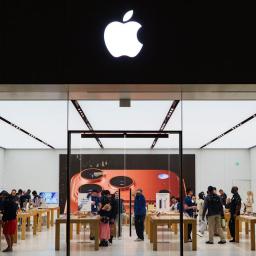 |
by Mariella Moon on (#71QFJ)
Apple has laid off dozens of employees across its sales team to streamline the organization and eliminate overlapping roles., according to Bloomberg's Mark Gurman. To connect with even more customers, we are making some changes in our sales team that affect a small number of roles," the company told Gurman, though it didn't say how many people were affected. Apple also said that it's hiring for new sales roles and that laid off employees can apply for them. They have until January 20 to secure a new position within the company, or they will be let go with a severance package.Some of the affected workers told Gurman that while Apple's official internal reason was to streamline its organization, the layoffs were primarily driven by its plan to shift sales more towards third-party resellers. By relying on third-party channels further, Apple could lower costs like its spending for people's salaries, especially since it eliminated longtime employees. They reportedly include managers and other staff members who've been with the company for 20 to 30 years.Apple's government sales team, which works with the Defense and Justice departments, was one of the biggest groups affected by the layoffs. It's not quite clear if it was a direct effect of the recent US government shutdown. As Gurman notes, the layoffs have taken place in the middle of a record-breaking period. After posting a $102.5 billion revenue for the quarter ending in September, it's now on track to make $140 billion in sales for the quarter ending in December.This article originally appeared on Engadget at https://www.engadget.com/big-tech/apple-lays-off-part-of-its-sales-team-140000749.html?src=rss
|
 |
by Sarah Fielding on (#717Q5)
Black Friday is basically here, and you can save on some sought-after tech. Case in point: the new Apple Watch SE 3. Apple's most affordable smartwatch is even cheaper right now, down to just $200. We consider this to be the best budget Apple Watch, and arguably the best smartwatch for folks who have never owned one before. The latest version runs on the same chipset found in the new flagship models, and it has most of the same fitness and workout tracking features you'll find in those more expensive devices as well. The SE 3 also now has an always-on display, making it easier to glance down throughout the day to check the time or see activity stats without moving your wrist, and fast-charging support makes it a more viable sleep tracker. Just plop it down on its charger for a bit at the end of the day and put it back on to monitor your sleep overnight. Also discounted is the flagship Apple Watch Series 11, which is $50 off and down to $349. We consider it to be the best smartwatch, period, thanks to its longer battery life, thin and light design, comprehensive health and fitness tracking features and extra perks like gesture control. This article originally appeared on Engadget at https://www.engadget.com/deals/the-new-apple-watch-se-3-drops-to-200-in-this-black-friday-deal-133057234.html?src=rss
|
 |
by Mat Smith on (#71QDF)
Yes, it's Tuesday, but the Black Friday sale bonanza continues to start earlier (wielded by even more retailers) each year. Our team was, is and will be curating the best Black Friday tech deals for this year's retail push and with less than a week to go, plenty of the best offers are already live.One surprise: PlayStation 5 discounts, with $100 off all the versions of the console . That brings the PS5 Digital Edition down to $399, the standard PS5 to $449 and the new PS5 Pro to $649.It's also a good year for home tech, whether you're looking for an air fryer upgrade or even a Dyson robot vacuum with $600 off. It's not the right season for it, but Ninja's ice cream maker is down to $180 too.In recent years, Black Friday sales have included even the most premium recent models, though the discounts are a little less remarkable. For example, the AirPods Pro 3 are currently on sale with a $29 discount on Amazon. Sadly, no discount for the iPhone Pocket.- Mat SmithThe biggest stories on Engadget.com
|
 |
by Lawrence Bonk,Valentina Palladino on (#714HV)
Black Friday deals are here, and a great one to check out is at Dyson. The discounts on Dyson's site right now are some of the best we've seen; one of those is $600 off the Dyson 360 Vis Nav robot vacuum, which is down to a record low of $400. Dyson was pretty late to the robot-vacuum party, but its entry was (and remains) one of the strongest in the category. It doesn't have a lot of bells and whistles like a self-emptying base or mopping capabilities, but it makes up for that by having probably the best suction power of any robovac we've tested. All kinds of debris will fall in its path: dirt, dust, food crumbs, pet hair and more. It also has excellent obstacle avoidance, so you'll rarely - if ever - have to dislodge it from getting stuck on the edge of a carpet or wedged in between furniture. Dyson's mobile app is easy to use as well, so if you're looking for a robot vacuum that does its main job incredibly well and you don't mind skipping on some extras, the 360 Vis Nav is a great option. Cordless vacuums are also a part of the sale. Take the Dyson V9 Motorbar cordless vacuum on sale for just $270 at both Dyson and Amazon, which is a discount of $330. That's more than half off. Dyson devices are all over our list of the best cordless vacuums, and for good reason. The company makes effective products. The V9 Motorbar has been designed to clean all floor types, in addition to upholstery. It's also been engineered to squeeze into tight spots, which is great for hitting those oft-neglected parts of the home. The suction power is on point and the battery lasts for 40 minutes before requiring a charge. That's just enough time to vacuum a standard-sized home if you don't stop for too many breaks. The V9 is getting a bit long-in-the-tooth. If you want a newer model, the V11 Extra is on sale for $400, which is a discount of $260. This one boosts the suction power and increases the battery life to 60 minutes. More Dyson Black Friday deals
|
 |
by Sarah Fielding on (#71QB3)
Fortunately, we live in a time when most information can be recovered from another device or the cloud. Now, iPhone users can add another app to that list. Signal has announced that secure backups are now available for iOS devices. It follows a similar launch for Android devices in early September. The company shared the news on X and linked to the previous Android blog post for all additional information.At the time, Signal noted that secure backups would be an opt-in feature and available in Android users' latest beta release. The company stated this was to test the feature on a smaller scale before it came to iOS and desktop - so clearly something worked.The end-to-end encrypted backup offers no-cost storage of a user's text messages and up to 45 days of media. Keeping older media costs $2 per month - Signal's first paid offering. "The reason we're doing this is simple: media requires a lot of storage, and storing and transferring large amounts of data is expensive," Signal said at the time. "As a nonprofit that refuses to collect or sell your data, Signal needs to cover those costs differently than other tech organizations that offer similar products but support themselves by selling ads and monetizing data."Anyone who opts-in will have their messages backed up each day. The secure backups use a 64-character recovery key that is available exclusively on a user's device. It's required to access the backup and Signal is unable to recover it.This article originally appeared on Engadget at https://www.engadget.com/apps/signal-extends-backup-feature-to-ios-users-133006884.html?src=rss
|
 |
by Georgie Peru on (#71MN7)
Samsung's Odyssey G8 OLED monitor is now down to $950 for Black Friday, saving you $350. It's one of Samsung's best 32-inch displays, offering a crisp 4K resolution, a 240Hz refresh rate and vivid OLED contrast that makes games and movies look incredible. The 32-inch Odyssey G8 has earned high marks for its blend of image quality and gaming performance. Its 4K OLED panel produces deep blacks and bright highlights, with 99 percent DCI-P3 color coverage for vibrant visuals. The 240Hz refresh rate and 0.03ms response time deliver exceptional smoothness in fast-paced games, while AMD FreeSync Premium Pro keeps everything tear-free. Design-wise, it's sleek and minimal, with a slim metal frame that looks just as good in a work setup as it does in a gaming room. The monitor supports DisplayPort 1.4 and HDMI 2.1 inputs, plus USB-C connectivity for charging and data transfer. Built-in speakers and Smart TV features let you stream directly from apps like Netflix or Prime Video without connecting to a PC or console. You also get Samsung's SmartThings integration, so the Odyssey G8 can double as a smart home hub, controlling compatible IoT devices from lights to thermostats. It even supports cloud gaming through Xbox Game Pass and NVIDIA GeForce Now, meaning you can play high-end titles without extra hardware. The combination of OLED contrast, motion clarity and built-in streaming makes it one of the most versatile monitors in Samsung's lineup. If you want something even larger, the Odyssey G9 is also discounted by $300, bringing the 49-inch curved DQHD model down to $700. It offers a wide field of view and 144Hz refresh rate, making it a great pick for simulation and racing fans. The Odyssey G7 is another strong choice, now $600 after a $300 discount. This 37-inch 4K display runs at 165Hz with a curved design and supports both HDR and AMD FreeSync for smooth gameplay. Finally, Samsung's Smart Monitor M9 is available for $1,300, $300 off its regular price. It combines 4K OLED visuals with built-in streaming and AI-powered vision tools, making it a good all-rounder for work and entertainment. This article originally appeared on Engadget at https://www.engadget.com/deals/samsung-black-friday-deals-get-up-to-350-off-gaming-monitors-and-more-103000276.html?src=rss
|
 |
by Nathan Ingraham on (#6R5X1)
Making a good digital picture frame should be easy. All you need is a good screen and an uncomplicated way to get your favorite photos onto the device. Combine that with an inoffensive, frame-like design and you're good to go.
|
 |
by Lawrence Bonk on (#71CV6)
Black Friday is a great time to take a look at what subscriptions you may be able to save on. From video streaming services to budgeting apps, many services will have some Black Friday promotion you may be able to take advantage of. One of the best we're tracking is for Audible. You can sign up and get your first three months for just $3 in total, plus get a $20 Audible credit on top of that. This breaks down to $1 per month for the first three months, which is a boon for audiobook fans. Just make sure to cancel before the 90 days are up, as the subscription will auto-renew at $15 per month. That's not the worst deal in the world, given the vast number of titles available on the platform, but still. Audible has a diverse catalog that goes beyond audiobooks. It also hosts podcasts and Audible Originals. Subscribers get to choose one audiobook each month to keep in their collection for free, including best-sellers or new releases. Users also get unlimited access to the Plus Catalog, which houses thousands of audiobooks. Finally, active members get discounts on many audiobooks when looking to purchase. Winter is coming and this is a good way to make sure you have plenty to listen to throughout the next three months. This deal does have a time limit. It expires on December 16.This article originally appeared on Engadget at https://www.engadget.com/deals/audible-black-friday-deal-three-months-of-access-drops-to-only-3-140010733.html?src=rss
|
 |
by Billy Steele on (#5W858)
The best soundbars can completely transform your TV setup, turning flat, lifeless audio into something that actually sounds cinematic. Whether you're watching blockbuster movies, listening to music or gaming, a good soundbar delivers clearer vocals, deep bass and better overall playback than most built-in TV speakers ever could.
|
 |
by Mariella Moon on (#71Q7A)
President Donald Trump has issued a new Executive Order that launches the Genesis Mission," an AI-focused initiative that will be led by the Department of Energy. It will harness the current AI and advanced computing revolution to double the productivity and impact of American science and engineering within a decade," the DOE explained. One of the mission's main goals is to build a centralized platform that will house a huge collection of datasets collected over decades of federal investments," as well as datasets from academic institutions and partners from the private sector.Those datasets will then be used to train scientific foundation models and to create AI agents, automate research workflows and accelerate scientific breakthroughs, the administration said in its announcement. The platform will connect the world's best supercomputers, AI systems, and next-generation quantum systems with the most advanced scientific instruments in the nation," the Energy department said.Based on that statement, the platform will be linked to the two sovereign AI supercomputers the agency is building at the Oak Ridge National Laboratory, its famous research and development center. The machines, to be built by Hewlett Packard Enterprises, are meant to be the Trump AI Action Plan's flagship supercomputers. The DOE previously revealed that the machines will be powered by AMD chips and will help tackle the biggest challenges in energy, medicine, health and national security.The Genesis Mission marks a defining moment for the next era of American science. We are linking the nation's most advanced facilities, data, and computing into one closed-loop system to create a scientific instrument for the ages, an engine for discovery that doubles R&D productivity and solves challenges once thought impossible," said Dr. Dario Gil, the Under Secretary for Science and Genesis Mission Director.In the next four months, the Energy department must identify its initial set of data and model assets for the Genesis platform. The department must be able to demonstrate an initial operating capability of the platform for at least one of the national science and technology challenges" the government has identified within nine months. While the list of challenges is pretty long, the Genesis Mission will focus on addressing three key challenges overall. First, it aims to accelerate nuclear and fusion energy, as well as to modernize the energy grid using AI. It also aims to power scientific discoveries for decades to come. Finally, it aims to create advanced AI technologies for the purpose of national security, such as systems that can ensure the reliability of America's nuclear weapons and can accelerate the development of materials for defense.This article originally appeared on Engadget at https://www.engadget.com/ai/trumps-genesis-mission-aims-to-build-a-centralized-ai-platform-to-power-scientific-breakthroughs-043506089.html?src=rss
|
 |
by Igor Bonifacic on (#71Q1B)
Cameo, the app that allows people to buy short videos from celebrities, has won an important victory in its legal battle against OpenAI. On Monday, a federal judge granted the company a temporary restraining order against OpenAI, CNBC reports. Until December 22, the startup is not allowed to use the word cameo" in relation to any features inside of Sora, its TikTok-like app for creating AI-generated videos. The order covers similar words like Kameo" and CameoVideo."We are gratified by the court's decision, which recognizes the need to protect consumers from the confusion that OpenAI has created by using the Cameo trademark," Cameo CEO Steven Galanis told CNBC. While the court's order is temporary, we hope that OpenAI will agree to stop using our mark permanently to avoid any further harm to the public or Cameo."An OpenAI spokesperson told Engadget: We disagree with the complaint's assertion that anyone can claim exclusive ownership over the word cameo', and we look forward to continuing to make our case to the court."Cameo sued OpenAI in October, claiming the company's use of the term was likely to confuse consumers and dilute its brand. Before filing the suit, Galanis said Cameo tried to resolve the dispute amicably," but claims OpenAI refused to stop using the name. Sora's cameo feature allows users to upload their likeness to the app, which other people can then use in their own videos. US District Judge Eumi K. Lee, who granted Cameo the temporary junction, has scheduled a hearing for December 19 to determine if the order should be made permanent.Update, November 24, 7:25PM ET: This article was updated after publish to include comment from an OpenAI spokesperson.This article originally appeared on Engadget at https://www.engadget.com/ai/openai-cant-use-the-term-cameo-in-sora-following-temporary-injunction-213431626.html?src=rss
|
 |
by Kris Holt on (#71PZ9)
One of the more intriguing prospects Amazon revealed at its devices and services event back in September was Alexa Home Theater, a surround sound mode for select Echo speakers. Amazon has now confirmed to Engadget that it's rolling out Alexa Home Theater "broadly" starting today.This could make Echo speakers a more budget-friendly, entry-level alternative to a Sonos setup in some consumers' eyes - though a good soundbar may be actually a better bet for those just starting to put together a home theater system. You can connect up to five of the company's new Echo Studio or Echo Dot Max speakers plus a subwoofer to a Fire TV Stick 4K or 4K Max (the original Echo Studio isn't compatible).Amazon said that, after you plug in several Echo devices in the same room as your TV and link them to the same Wi-Fi network, the Alexa app can walk you through the setup process. Alexa will automatically tune the speakers for your space.As it happens, the latest Echo Studio and the Echo Dot Max are both on sale for Black Friday, along with other Amazon devices. The Echo Studio is $30 off at $190 and the Echo Dot Max has dropped by $10 to $90.This article originally appeared on Engadget at https://www.engadget.com/audio/speakers/alexa-home-theater-surround-sound-for-echo-speakers-is-rolling-out-now-204557932.html?src=rss
|
by Billy Steele on (#6ARQQ)
In the last few years, pizza ovens have become as much of a backyard staple as a grill. There are many options for making restaurant-quality pies at home in a range of styles. What's more, many models allow you to change up the fuel type, and some even allow you to do more than simply fire off pizzas. I've compiled a list of the best pizza ovens that you can buy right now, with selections for multi-fuel ovens, compact designs and indoor pizza parties. I've also included some buying advice on what to consider before you commit and how to get the most out of your at-home pizza making experience. Table of contents
 |
by Lawrence Bonk on (#71PZB)
It's been a long road to get here, but the surreal skateboarding sim Skate Story will actually be available to play on December 8. The title will also be a day-one Game Catalog release for PlayStation Plus subscribers, which is a great perk for Sony fans. It'll be available on other platforms, like Steam and Nintendo Switch, but those versions cost $20. The PS5 version is free for PS Plus subscribers and it's not currently coming to Xbox.For the uninitiated, Skate Story can only be described as a Lynchian take on skateboarding. Players control a glass avatar and they perform tricks to, well, swallow the moon and defeat the devil. It was announced all the way back in 2020. We got to play it last year and came away impressed. The game was made by Sam Eng, who was behind the indie shooter Zarvot.It's also being published by Devolver Digital, a company that knows its way around unique gameplay concepts. It published the utterly sublime Cult of the Lamb and one of our recent favorites, Ball x Pit. The former lets you feed poop to cult followers, which makes performing kickflips as a glass-bodied demon seem downright normal.Looking to see what all of the fuss is about? There's a demo right now on Steam. The game's also available for purchase on the PS5, for those who don't wanna pony up for a PS Plus subscription.This article originally appeared on Engadget at https://www.engadget.com/gaming/playstation/skate-story-grinds-its-way-to-playstation-plus-on-december-8-193034939.html?src=rss
|
 |
by Igor Bonifacic on (#71PX1)
Hot on the heels of Google's Gemini 3 Pro release, Anthropic has announced an update for its flagship Opus model. Now at version 4.5, the new system offers state-of-the-art performance in coding, computer use and office tasks. No surprise there, those have been some of Claude's greatest strengths for a while. The good news is Anthropic is rolling out a handful of existing tools more broadly alongside Opus 4.5. It's also releasing one new feature.To start, the company's Chrome extension, Claude for Chrome, is now available to all Max users. Anthropic is also introducing a feature called infinite chat. Provided you pay to use Claude, the chatbot won't fall to context window errors, allowing it to maintain consistency across files and chats. According to Anthropic, infinite chat was one of the most requested features from its users. Then there's Claude for Excel, which brings the chatbot to a sidebar inside of Microsoft's app. The tool is now broadly available to all Max, Team and Enterprise users, with support for pivot tables, charts and file uploads built-in.A table comparing Opus 4.5's efforts in various benchmarks. AnthropicOn the subject of Excel, Anthropic says early testers saw a 20 percent accuracy improvement on their internal evaluations and a 15 percent improvement in efficiency gains. As a complete Excel noob, I'm excited to for the company to trickle down that expertise to its more consumer-oriented models, Claude Sonnet and Haiku.Elsewhere, Opus 4.5 also delivers improvements in agentic workflows, with the new model excelling at refining its own processes. More importantly, Anthropic is calling Opus 4.5 its safest model yet. It's better at rejecting prompt injection style attacks, outpacing even Gemini 3 Pro, according to Anthropic's own evaluations.If you want to try Opus 4.5 for yourself, it's available today through all of Anthropic's apps and the company's API. For developers, pricing for the new model starts at $5 per million tokens.This article originally appeared on Engadget at https://www.engadget.com/ai/anthropics-opus-45-model-is-here-to-conquer-microsoft-excel-190000905.html?src=rss
|
 |
on (#71PX2)
With Black Friday around the corner, OpenAI is upgrading ChatGPT's shopping capabilities just in time to make spending your money even easier. Starting today, the company has begun rolling out shopping research, a new feature inside of ChatGPT designed to simplify the process of comparing different products.The tool is available to all ChatGPT users, including those with free accounts, with the company offering nearly unlimited usage through the holidays. As long as you're logged into your OpenAI account, you can try out the new experience by selecting "Shopping research" from the + menu. ChatGPT will also automatically route prompts it determines would be best served by the new model OpenAI has trained to answer commerce-related questions. For instance, if you type, "find the quietest cordless stick vacuum for a small apartment," ChatGPT will know what to do.As it works to find products that fit your criteria, ChatGPT will ask clarifying questions. OpenAIIn addition to comparative shopping, the new experience can help users track down deals, shop for gifts and even find lookalike products. For example, you can snap a photo of a dress and ask ChatGPT to find you something similar that costs less than $250. As you use the tool, ChatGPT will ask clarifying questions to help it narrow down its recommendations. For ChatGPT Pulse users, the tool will even be proactive, generating cards that offer personalized buying guides based on past conversations.The feature is powered by a variant of GPT-5 mini designed to excel specifically at shopping-related tasks. "We trained it to read trusted sites, cite reliable sources and synthesize information across many sources to produce high-quality product research," said OpenAI. In practice, the shopping assistant should be better at accurately citing product details relative to the company's other systems, including more powerful general-purpose models like GPT-5 Thinking. Still, OpenAI warns the tool isn't perfect."Shopping research might make mistakes about product details like price and availability, and we encourage you to visit the merchant site for the most accurate details," the company said. Additionally, OpenAI notes the tool tends to do best in categories like electronics, beauty and home appliances where there are many details and specs the model can compare to generate comprehensive answers.It's no surprise to see OpenAI expand ChatGPT's shopping capabilities. The company already offers the option to buy items from Etsy from its chatbot, and competitors like Google have been aggressively adding AI shopping features in recent months.This article originally appeared on Engadget at https://www.engadget.com/ai/chatgpt-now-offers-a-dedicated-shopping-assistant-180000034.html?src=rss
|
 |
by Lawrence Bonk on (#71PRR)
There are millions upon millions of podcast episodes out there and it can be tough to figure out what to listen to and when. The popular podcast service Pocket Casts is rolling out a playlists feature to help users make sense of it all.This is being advertised as a "new way for listeners to organize, sequence and customize episodes across all their favorite shows." The idea of a playlist isn't new by any stretch, but it's not typically an option on podcast apps. As a matter of fact, Pocket Casts says this was one of its most-requested features.The platform says this tool is great for "building a morning news lineup, curating interviews to study a topic or creating a queue for a long flight." There's a manual option but also an automatic Smart Playlists feature that gathers episodes together based on pre-determined rules.Pocket Casts For instance, episodes can be collected and sorted by release date, duration and other factors. This replaces the pre-existing filters tool. I can absolutely see this being useful on a road trip when you don't really wanna fiddle with a phone and would rather just let the podcast episodes flow into one another to create a Conan O'Brien-induced driving zen state.The playlists tool is available right now. This is just the latest move by Pocket Casts. The service recently added a free tier for accessing its web player and desktop app. We love it when things get cheaper, don't we folks?This article originally appeared on Engadget at https://www.engadget.com/entertainment/pocket-casts-rolls-out-playlists-so-users-can-sequence-episodes-of-their-favorite-shows-170046666.html?src=rss
|